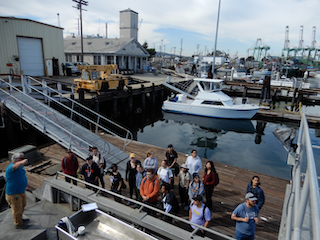
-
| 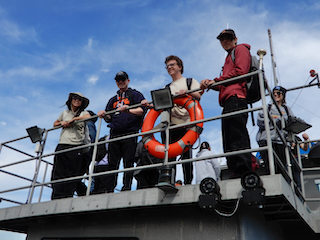
-
| 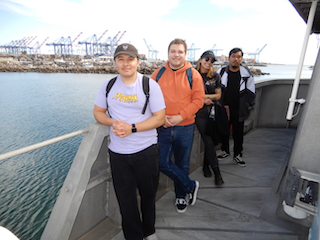
-
|
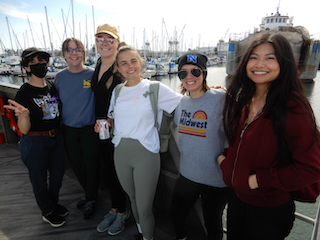
-
| 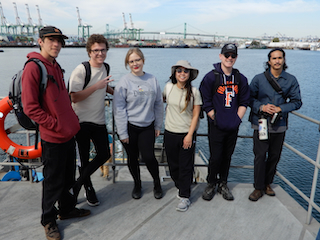
-
| 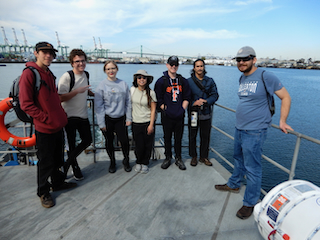
-
|
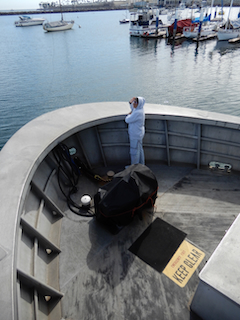
-
| 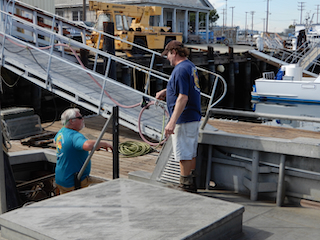
-
| 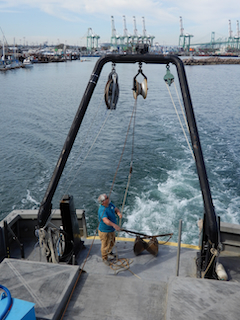
-
|
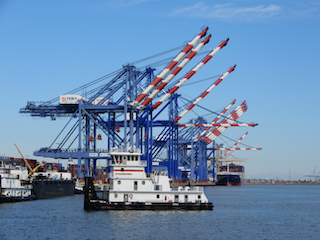
-
| 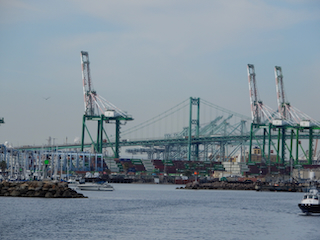
-
| 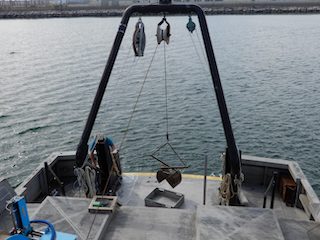
We sampled critters living in the muddy sea floor within the harbor with a Van Veen grab.
|
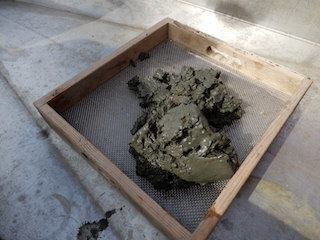
-
| 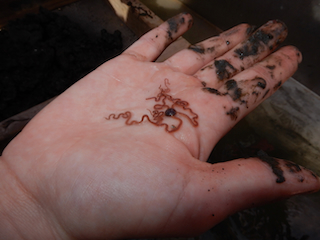
Red brittle stars, Amphiodia spp., have impressively long arms and
are among the most common animals living on the muddy seafloor the southern California continental shelf.
For those who monitor sewage outfalls, to record an increase in their abundance is a sign of a reduced negative impact from the effluent.
| 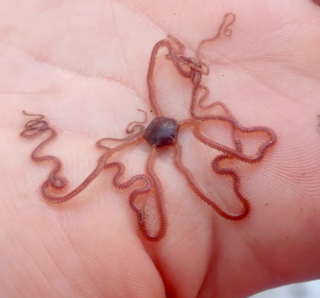
Dr. Richard Emlet (see Source), from the Oregon Institute of Marine Biology, studied the unusual direct development of one of the Amphiodia species,
A. occidentalis. Embryos from externally-fertilized eggs were observed to be negatively buoyant, and
only about 0.2 mm in diameter, but they do not pass through an ophiopluteus larval stage. Instead, they develop directly into tiny juveniles.
- Source:
Invertebrate Biology 125: 154-171.
|
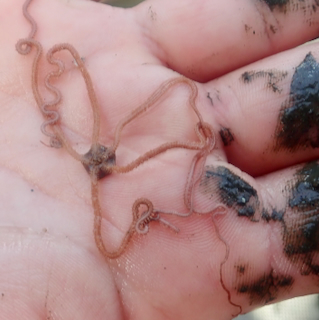
-
| 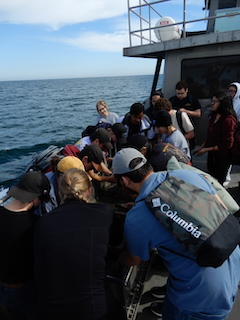
Leaving the harbor we continued to sort through the mud and also saw common dolphins (Delphinus delphis),
which are globally the most common of any cetacean species and
are distributed worldwide in tropical to cool waters (see range map in Source), with those in California belonging to
D. d. bairdii or Eastern North Pacific long-beaked common dolphin subspecies.
On our longer trips to Catalina, we often have seen groups swimming in the wake of our boat, occasionally numbering in the hundreds.
Source: Wikipedia
| 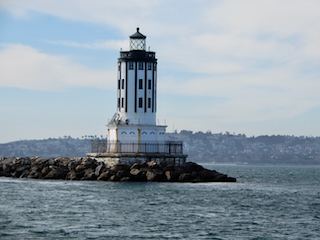
Angel's Gate Lighthouse is a Historical Landmark built in 1913 at the end of the
harbor breakwater.
|
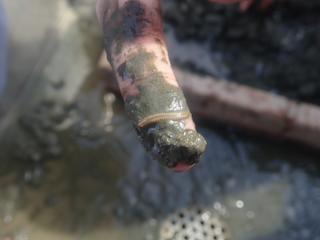
-
| 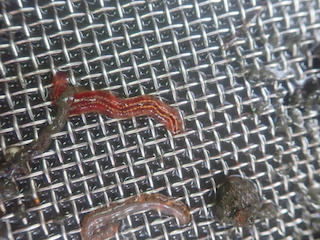
These polychaetes (Gymnonereis crosslandi) live on or in the mud within the L.A. Harbor,
and are common in similar habitats globally.
This widespread species can be easily recognized by their parallel longitudinal pairs of golden pigment lines along the dorsal side of their body.
Worms of this family, Nereidae, range from omnivores to being mainly predatory. The only images of it on iNaturalist (see Source)
are also from L.A. Harbor, posted by worm expert from the Natural History Museum of L.A. County, Dr. Leslie Harris.
Source: iNaturalist
| 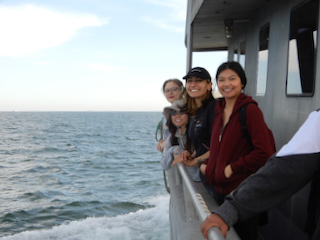
-
|
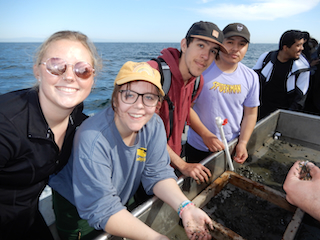
-
| 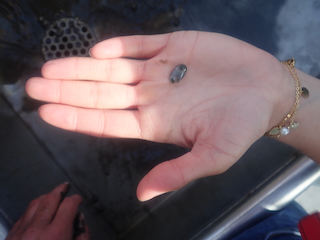
-
| 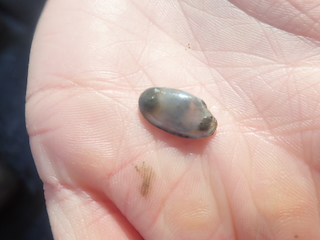
-
|
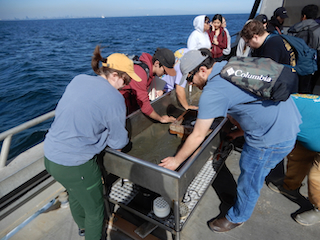
-
| 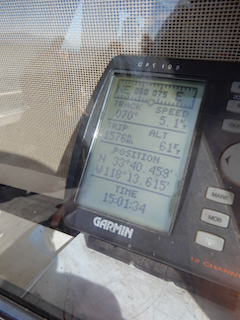
Try pasting latitude and longitude into a mapping app, which can normally interpret
latitude and longitude in various formats. The boat's GPS is here set to display degrees with digital minutes, which can also be written as only four numbers
(in this case as below, no minus sign before 33 degrees means we are North of the Equator; a minus sign before the 118 degrees means we are West in degrees longitude). -
The start of our first biological (rock) dredge at maps.google.com:
33 40.459 -118 13.615
| 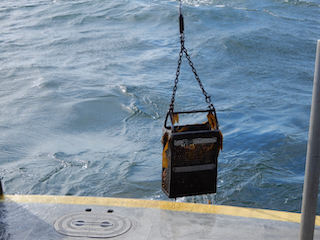
-
|
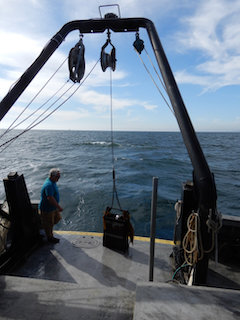
-
| 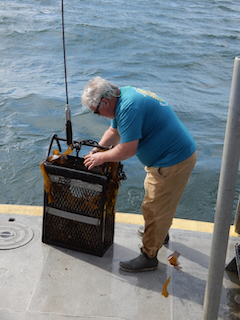
-
| 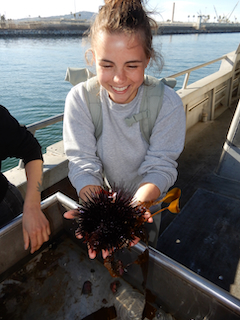
-
|
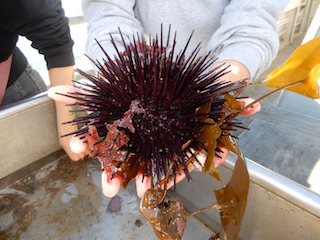
We sometimes find red urchins (Mesocentrotus franciscanus) in the intertidal
but they tend to be much larger at subtidal depths down to about 280 m depth, even much larger than this one -- and the very large ones have been
found to be over 200 years old (see Source). -
Source: Wikipedia
| 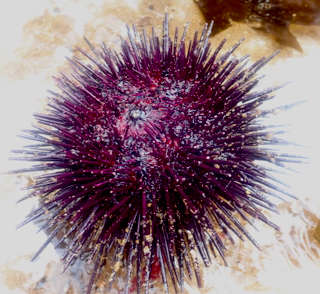
-
| 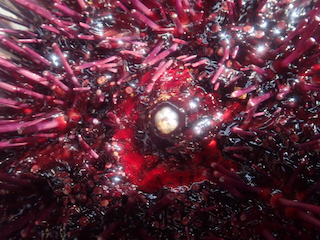
The top of a sea urchin is the aboral side, while this oral view shows the mouth with its five teeth
- part of the jaw apparatus known as an Aristotle's lantern.
|
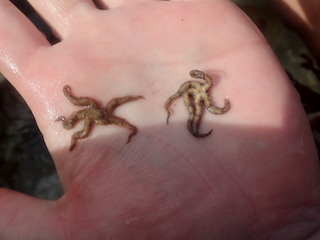
Tentative: Ophiopteris papillosa (flat-spined brittle star)
| 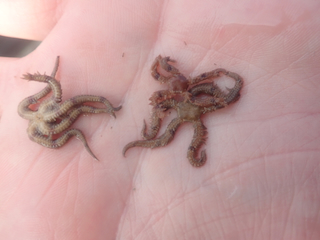
-
| 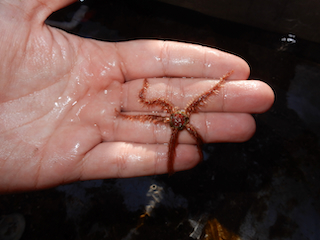
Ophiothrix spiculata (western spiny brittle star)
|
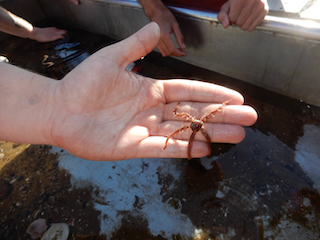
-
| 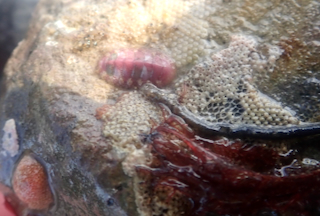
This chiton, Dendrochiton thamnoporus, appears to have been grazing colonial animals known
as encrusting bryozoans, attached to this rock. Other species chitons and certain gastropods probably feed on bryozoans as well.
On the bottom left is an orange blob, which is a suspension-feeding gastropod with a limpet-like shell, Crepipatella lingulata (Pacific half-slipper snail),
but the orange color is from an orange bryozoan that lives on the whitish shell of C. lingulata. My former grad student, Kevin Meade, studied this orange bryozoan,
Rhynchozoon rostratum, and I have hypothesized that the bryozoan is taking advantage of a grazer-free attachment space when they settle on the shell of
a C. lingulata.
I further hypothesized that the mantle tissues at the margin of the half-slipper snail might taste bad to grazers, so they avoid crawling onto the shell.
| 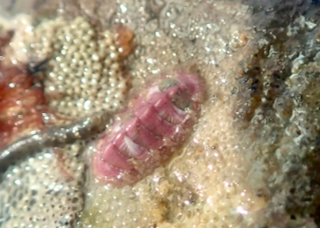
Dendrochiton thamnoporus
|
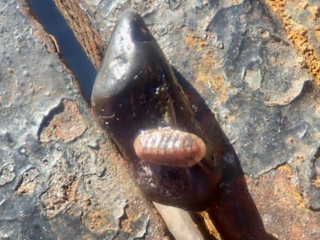
The chiton, Dendrochiton gothicus, tends to be smaller than D. thamnoporus
and more common; it lacks the bushy setae on its girdle as in D. thamnoporus.
| 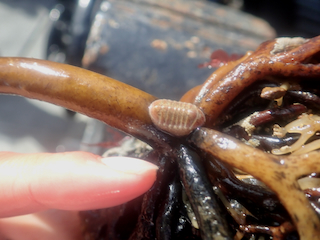
-
| 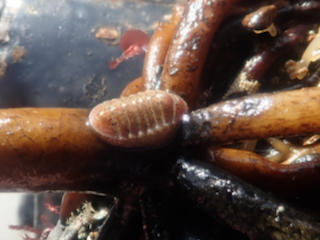
Leptochiton nexus
|
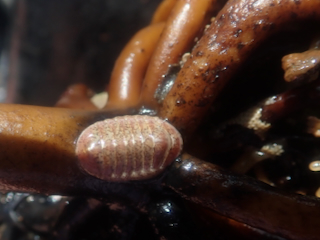
-
| 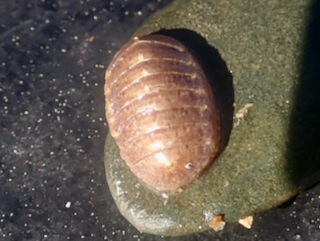
Leptochiton nexus
| 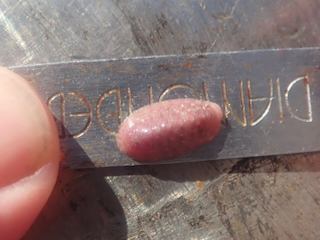
Lepidozona scrobiculata
|
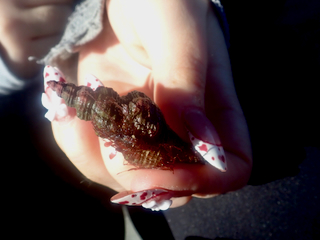
-
| 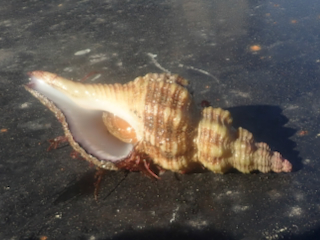
Harfordia mcleani (Fasciolariidae), about 56 mm long; I finally recognized the genus but
Roger N. Clark helped again with the specie ID.
| 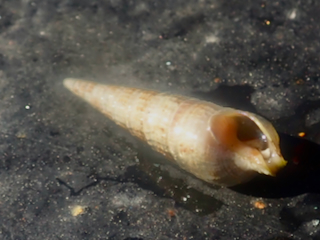
Terebra pedroana
|
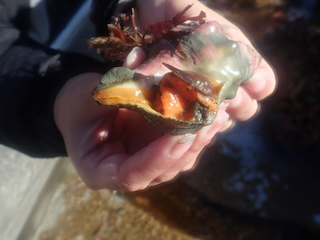
Kelletia kelletii or Kellet's whelk (Caenogastropoda: Neogastropoda: Austrosiphonidae)
| 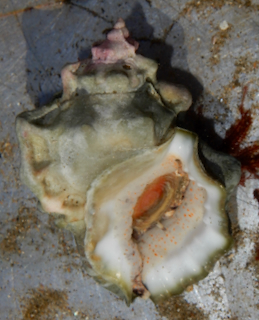
Crossota californica or California frog snail (Caenogastropoda: Bursidae)
| 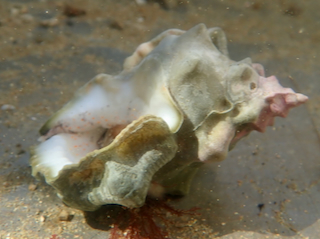
-
|
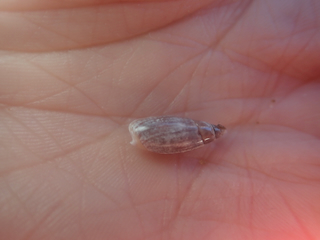
Callianax baetica or baetic olive snail (Caenogastropoda: Neogastropoda: Olividae)
| 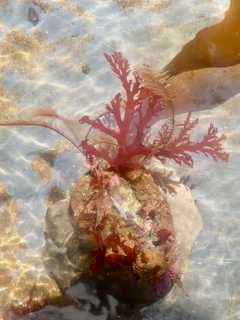
Ostrich-plume hydroids include Aglaophenia struthionides (Murray, 1860) and
A. latirostris, two species that require microscopic examination to distinguish, according to Greg Jensen, Daniel Gotshall, and Rebecca Flores Miller (Source 1). There
are also A. inconspicua Torry, 1904 and other species that could be in San Pedro (Source 2). The European A. pluma (Linnaeus, 1758),
at least, is reported as having three defensive
polyps surrounding each feeding polyp (Source 3), and the reproductive polys replace normal side branches with these polyps
inside basket-like structures
known as corbulas (visible in this image). -
Source 1: Beneath Pacific Tides 2018 -
Source 2: Claudia Mills et al. in J. Carlton (Ed.) Light & Smith Manual 2007: 160, pl. 44 -
Source 3: habitas.org.uk
| 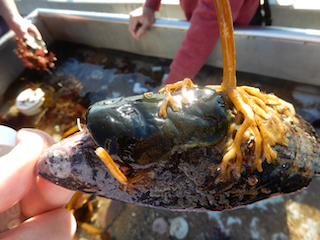
From our 2017 cruise off San Pedro
(we have seen it several times since including in 2024):
Codium hubbsii is typically subtidal and prostrate, meaning I assume it spreads out on the substrate.
It is not especially closely related to the similar appearing, but more northern and intertidal, C. setchellii.
The latter is more irregular and tightly adherent to the substrate, usually in sandy areas, whereas C. hubbsii
tends to be approximately circular, with loose margins (2017 ID and details: Kathy Ann Miller).
|
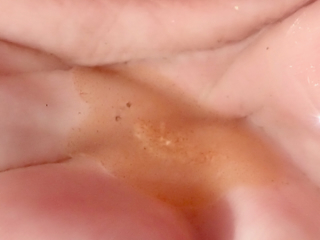
This unidentified polyclad flatworm was see-through and very flat (i.e., thin).
| 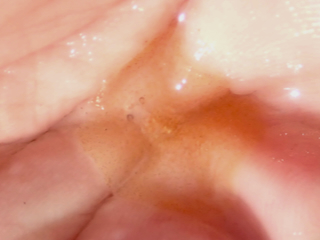
-
| 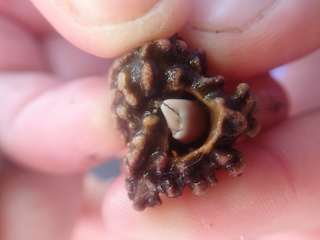
Pagurus retrorsimanus (benthand hermit) inside a snail shell heavily
encrusted with a bryozoan that makes coral-like growths, Akatopora tincta.
|
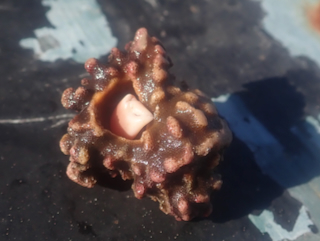
-
| 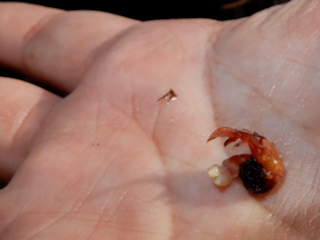
We later saw this Pagurus retrorsimanus female brooding embryos that was missing its shell.
| 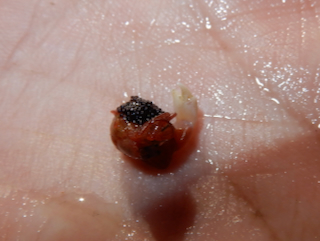
-
|
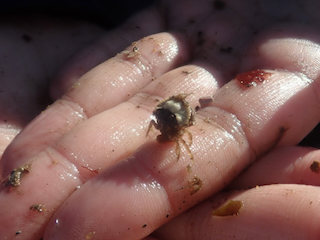
According to an identification kindly provided by
crab expert, Dr. Greg Jensen, this female cancrid (Cancridae) crab is one of at least two species that
have been lumped as Cancer amphioetus Rathbun, 1898. In her description, Mary J. Rathbun (see Source)
described Cancer amphioetus from localities in Mexico, USA, and Japan, first listing the locality, Madgalena Bay, Lower California
(Pacific coast of Baja California Sur, Mexico),
but also included specimens
from as far north as San Diego Bay, and also from the Gulf of California and Japan.
Source: Rathbun, Mary J. 1898.
Proceedings of the United States National Museum 21(1162): 567-616, pls. XLI-XLIV
| 
By searching the Smithsonian's (USNM) collections online (see Source), I found 45 specimens identified by Rathbun as this species
from the R/V Albatross material. Of these, six adults are from the East Pacific, all from Mexico, and 15 adults are from Japan.
The remaining 24 specimens are juveniles, which Rathbun wrote were not identified confidently.
Source: USNM Invertebrates Collections Search
| 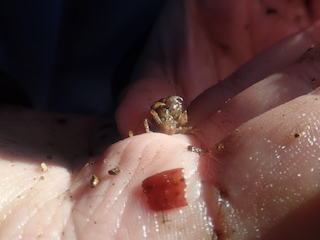
The Smithsonian does not list any of the 45 specimens as a lectotype
(explanation linked below). If indeed, no one has published a lectotype designation,
it would be helpful if this was done in the future. This is because the locality of the chosen specimen would become the type locality, so the species name
would be restricted to either Mexico or Japan (assuming that an adult specimen would be selected as the lectotype).
Lectotype designation would ideally be done after examination of the syntypes at the Smithsonian by someone experienced enough
to be able to compare the specimens to Rathbun's published description. Ideally, that person would also be willing to revise the potentially different
species at whichever locality was not selected as the type locality.
Eternally curious? What is a lectotype? (Wikipedia)
|
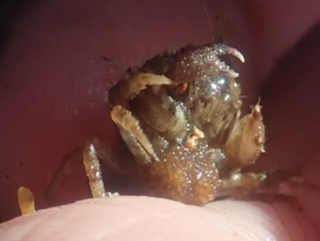
Following the revision of the generic reassignment of this species found in WoRMS
(see Source), this crab tentatively identified as Glebocarcinus amphioetus (Rathbun, 1898) is a female brooding a large mass of embryos.
Source: World Register of Marine Species (WoRMS)
| 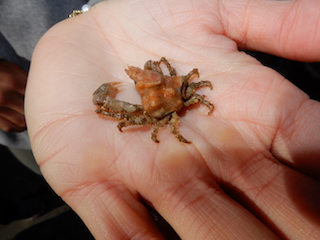
This decorator crab was identified with the help of the splendid book by Dr. Greg Jensen (see Source)
as Scyra acutifrons, later kindly confirmed by Dr. Jensen.
Source: Jensen, G.C. 2014. Crabs and Shrimps of the Pacific Coast. Mola Marine.
| 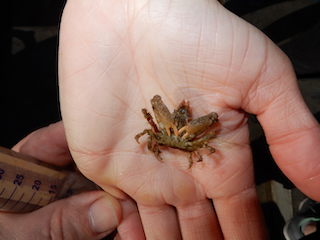
-
|
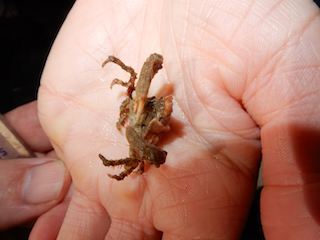
-
| 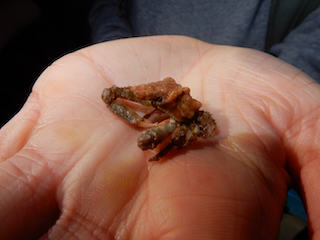
-
| 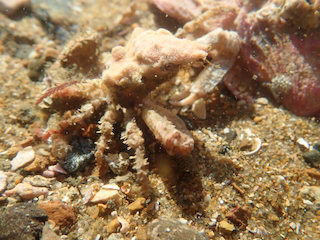
-
|
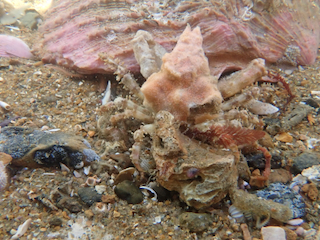
-
| 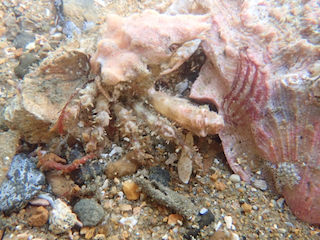
-
| 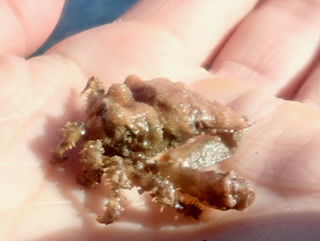
-
|
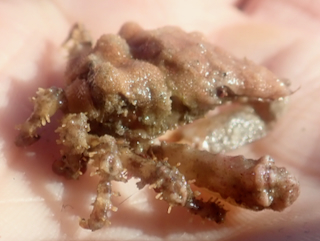
-
| 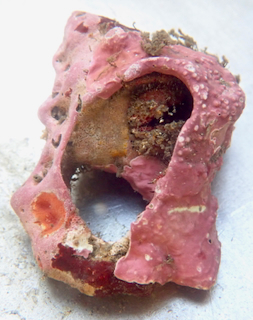
-
| 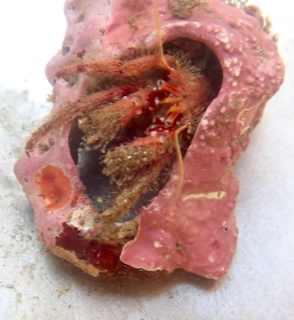
Paguristes ulreyi (identification by Dr. Greg Jensen)
|
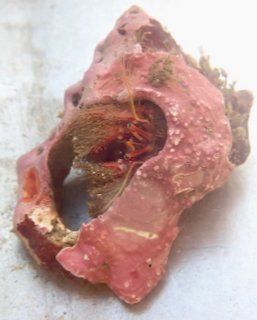
-
| 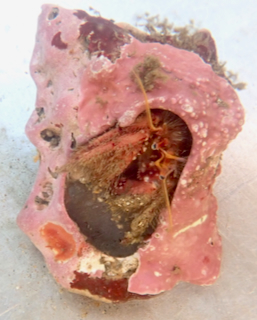
-
| 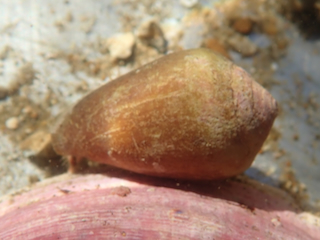
-
|
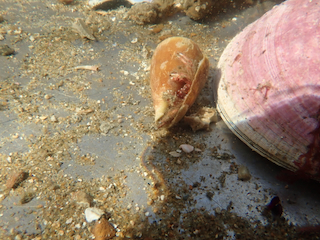
-
| 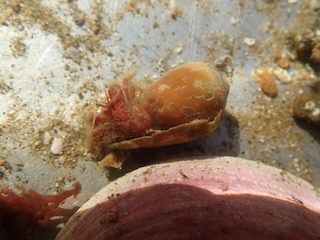
Another Paguristes ulreyi, with identification kindly provided by Dr. Greg Jensen - note the
furry antennae that are used by members of this genus for suspension feeding.
| 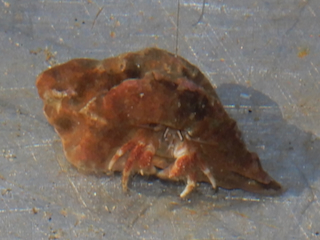
According to Dr. Greg Jensen, this is the still undescribed
species referred to as Paguristes sp. in his book (see Source) on West Coast crabs and shrimps.
Source: Jensen, G.C. 2014. Crabs and Shrimps of the Pacific Coast. Mola Marine.
|
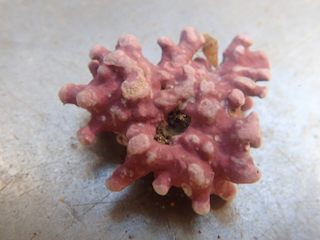
Rhodoliths, which can be quite common on the sea floor, are masses of crustose coralline algae that
roll around on the bottom with wave action, and can be a colonized by marine invertebrate larvae and sometimes by even a hermit crab. This one might have had a hermit in it.
| 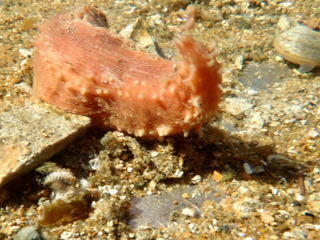
unidentified sea cucumber
| 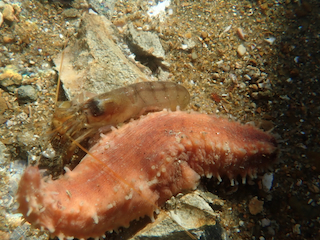
-
|
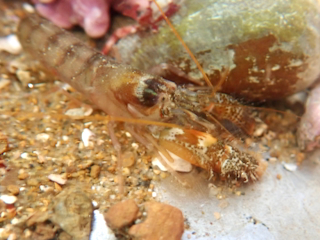
Alpheus clamator (twistclaw pistol shrimp)
| 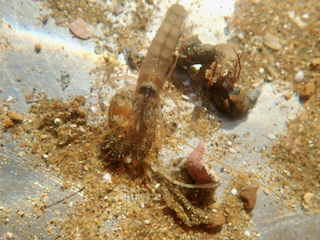
-
| 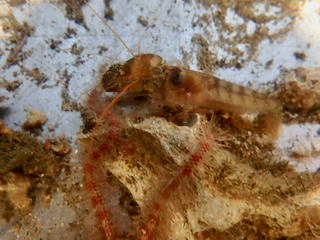
-
|
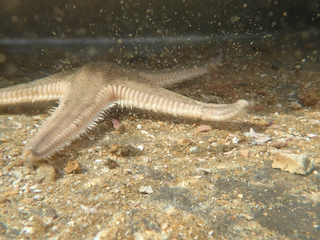
Astropecten armatus (armored sea star)
|
 Under Construction!
Under Construction! Under Construction!
Under Construction!